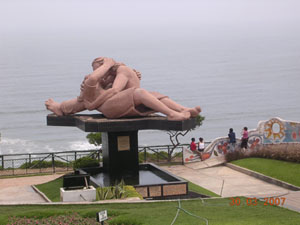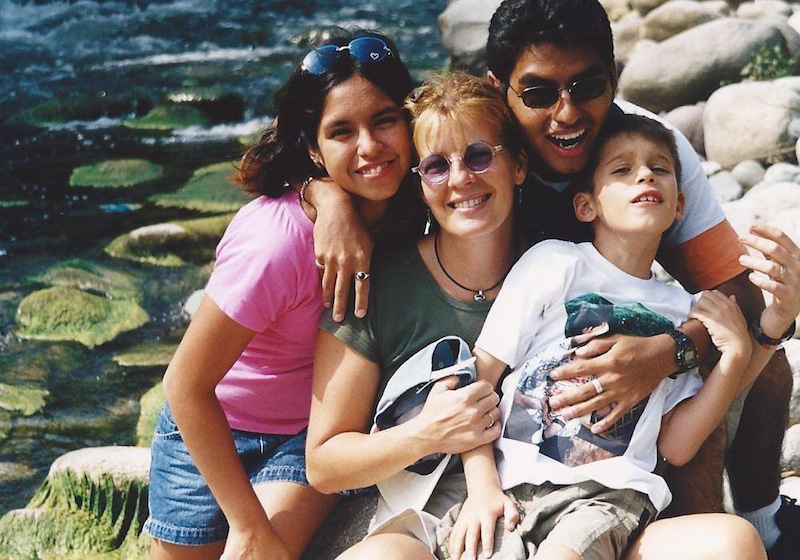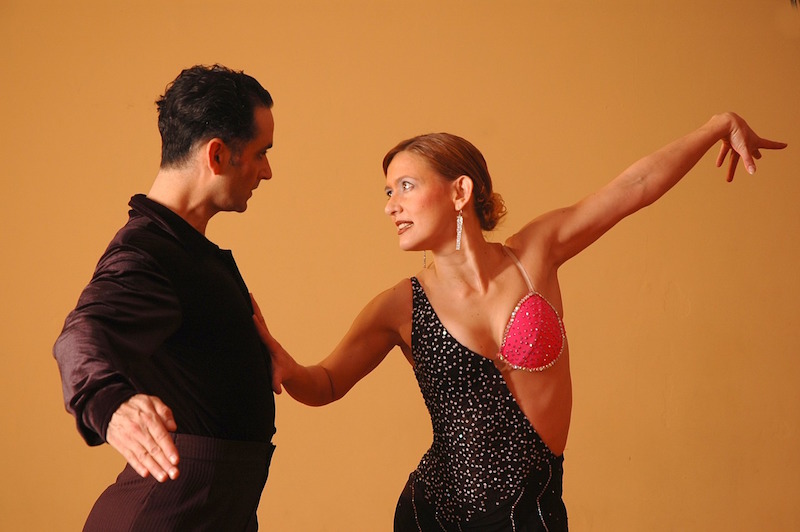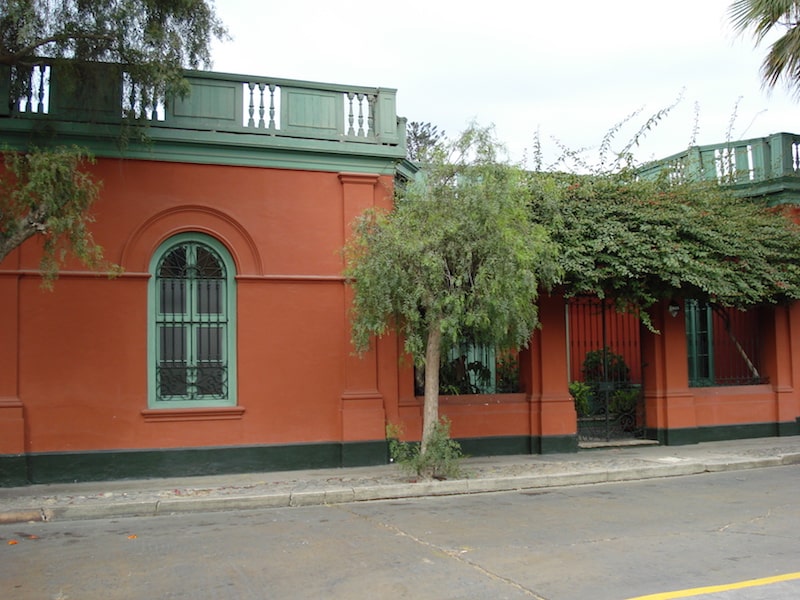
Ioana is a very dear friend of Expatclic. She is Rumanian and she presently lives in Lima, Peru, with her husband. This is the poignant account of her relationship to her hosting town, and her life in Lima.
 It is emblematic the strategic location of Lima on the shore of the Pacific Ocean. The ocean is the entrance gate to the city and the link with the rest of the world. The presence of the immense mark of water sealed from the very beginning my life in Peru.
It is emblematic the strategic location of Lima on the shore of the Pacific Ocean. The ocean is the entrance gate to the city and the link with the rest of the world. The presence of the immense mark of water sealed from the very beginning my life in Peru.
The tumultuous Peruvian capital is waiting for me, my life in Lima has just started, but I am sitting in a bar on the shore of the ocean, savoring a pisco sour and listening to the rush of the waves. This way I try to enter slowly into the atmosphere of the place. I try to grasp, among the mingled sounds of the waves engaged in this endless dance, the reason, the answer to the question “why” I am here. I confess that I am enchanted, but I also experience a certain feeling of fear – the fear of the new, fear of the unknown. Fortunately, I don’t feel any pressure of time and this gives me a sensation of quiet satisfaction.
It is sunset time. The waves continue to roll in spume toward the shore. The sun begins to slip down, and when it feels the cold touch of the ocean, it becomes intensely orange, then the colors begin to mix, they overshadow and slowly the sun disappears swallowed up by sea. It becomes dark and silent. The waves continue their never-ending game. This is the first day of my life Lima. I catch a last glimpse at the ocean, full of illusion and hopes and I turn to the town.
The first days in this vibrant city exhaust me. Lima must be discovered, I must learn to feel the pulse of life here, to tune in with the people, to decipher the local codes of conduct. It is a process carried out step by step. I understand that everything depends on the degree to which I open my mind in my life in Lima, on the desire to discover and understand a new culture.
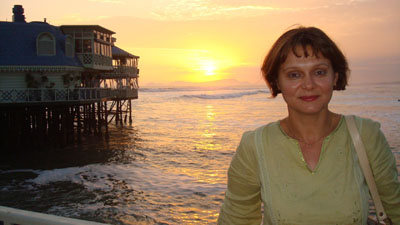
Sunset in Lima
First, I must free myself of all the clichés regarding South America, which sometimes do so much harm. However, involuntary my mind conjures up the disconcerting passages of “The Open Veins of Latin America” (Eduardo Galeano – Las Venas Abiertas de America Latina), which I discovered and read breathtakingly in the first year of College. In my mind also resound the steady melodies of the song “Que Sera Sera”, a song that was a big hit among the students in Romania in the ‘80s. Nobody is listening nowadays in Lima to Que Sera Sera, and I don’t try to explain to anybody the double significance of this song to me
It is not my first visit to Peru, but my previous visits, short and very condensed, left me with the sensation that I couldn’t see and do everything I intended to. In those times I was nothing but a tourist, a passing-by person. But now I have come for a longer period and I will finally have enough time to visit all the places I dreamed of, to spend hours and hours in the colorful craft markets, and to admire the creations in silver, textiles, wood or ceramics of the Peruvian craftsmen.
I will delight myself to saturation with expressions of the pre-Columbian cultures spread in various museums in Lima or in the museums “in situ”, to taste the specialities of the Peruvian chefs (particularly those based on fish and shellfish), who compete in delighting our palates with savory dishes, presented under strict aesthetic and colorful criteria, to stroll through the markets with exotic fruits and vegetables so multi-colored and varied. It is extremely rewarding to be a customer in Lima, to be treated exactly according to the slogan: “Our customer, our Master”. And I don’t exaggerate when I say that sympathy towards the customer is natural, and amiability is a native attribute, and not learned.
For any European who arrives in Lima, the contrasts so characteristic of South America and visible at every step in Lima are striking. In the city you can pass easily from the fashionable areas with stylish mansions and modern buildings, with fancy boutiques and chic restaurants to areas that reveal the other face of Lima: sad, monotone, modest.
The difference is becoming more evident when comparing the wealthy residential areas, where special attention is paid to details, to the harmony of the gardening and the exterior lightning, and that contrasting strikingly with the big agglomerations of modest homes in outlying areas, where the order of the day is improvisation.
Involuntarily, in the first weeks of my life in Lima I couldn’t feel at ease, because of a strange sense of guilt mixed with the powerlessness that I felt seeing the contrasts around me. But these feelings have begun to disappear as I have begun to talk to ordinary people like the “naranjero” (the home supplier of oranges), the “florero” (the flower supplier), the porter, proud of his place of work, and with many taxi drivers in my daily wanderings around the town. These people assume their role and place in society with normality. But what has brought me more joy and satisfaction is the feeling of optimism one can breathe. Despite the years of violence and suffering which marked the decade of the 80s, despite the economic problems and the financial crisis, the normal Peruvian has the talent to see the glass half-full.
They carry the pain in their soul with dignity, the suffering is part of their daily life and they manifest it through various spiritual forms or through their music. But the hope is stronger and the desire to go on (“salir adelante”) is the engine of their lives.
Lima is an ethnic and cultural mosaic, due both to the local specific, but also to the successive waves of emigrants who came to this land. Europeans, Africans, Asians, Jewish or Arabs, in more or less numbers, have arrived, installed themselves here and never left. From the second generation, they get a new identity, they become Peruvians.
New waves of expats, a result of globalization, have arrived in recent years to Peru. The country’s attraction is incredible, its pros are numerous: rich country, good climate, friendly environment and a stable political climate. There are many cases where those who came for 3 months remained for 3 years, which have turned into 30 years. For many of them, the search has ended. For others, like me, I feel that I still have a long way ahead.
 I walk on the crowded streets of the historic center of Lima and I lose myself in the crowd. Unwillingly I search elements familiar to me. I look at the facades of the old colonial mansions and I try to imagine the brilliant life to be held once behind these walls. Today, sad and degraded, they look at me in silence and with reproof.
I walk on the crowded streets of the historic center of Lima and I lose myself in the crowd. Unwillingly I search elements familiar to me. I look at the facades of the old colonial mansions and I try to imagine the brilliant life to be held once behind these walls. Today, sad and degraded, they look at me in silence and with reproof.
People pass away in a hurry, I feel like I am swimming against the current. Although in everyday life, Peruvians love the new and the novelty, they have a legitimate feeling of pride related to the impressive cultural and archaeological legacy of their ancestors, to the riches of the soil and the variety and beauty of the sceneries. They feel proud about the increasing numbers of tourists that arrive in Peru, about the high appreciation their country and their gastronomy have acquired lately, about the election of the symbol of the Inca Empire as one of the 7 wonders of the modern world. This heritage belongs to them; it is given, not gained, but completely justified. And we, those who have the chance to spend more time in this land, are privileged to feed ourselves off the spiritual stream of this land.
The communities of expats are numerous in Peru and are constituted based on national, geographical or language criteria. Sooner or later, we need each other in this joint experience. Sometimes we borrow features that maybe are not characteristic to our people: we become more united, more communicative, sensitive, friendly and pleasant. In other cases, people become intolerant, reserved or snobbish. It depends on the experiences lived during the adaptation period. It depends on the capacity to accept a different way of life, a new idiosyncrasy, to discover affective and soul affinities with new people, with different people. It’s a long and hard way, important is what we pick up on the way.

